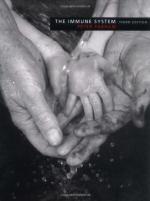|
This section contains 528 words (approx. 2 pages at 300 words per page) |

|
One way in which the immune system responds to pathogens is by producing soluble proteins called antibodies. This is known as the humoral response and involves the activation of a special set of cells known as the B lymphocytes, because they originate in the bone marrow. The humoral immune response helps in the control and removal of pathogens such as bacteria, viruses, fungi, and parasites before they enter host cells. The antibodies produced by the B cells are the mediators of this response.
The antibodies form a family of plasma proteins referred to as immunoglobulins. They perform two major functions. One function of an antibody is to bind specifically to the molecules of the foreign agent that triggered the immune response. A second antibody function is to attract other cells and molecules to destroy the pathogen after the antibody molecule is bound to it...
|
This section contains 528 words (approx. 2 pages at 300 words per page) |

|


